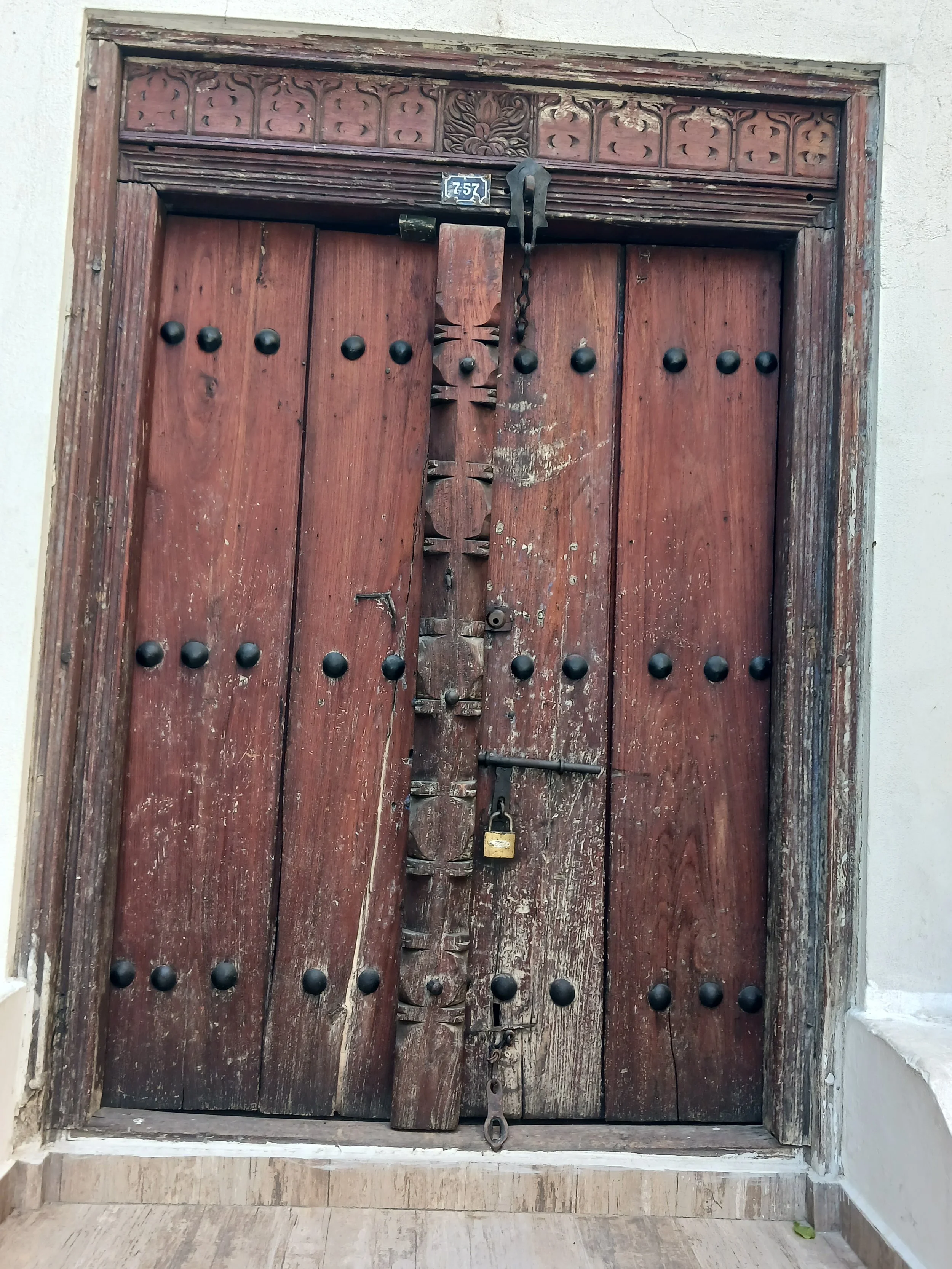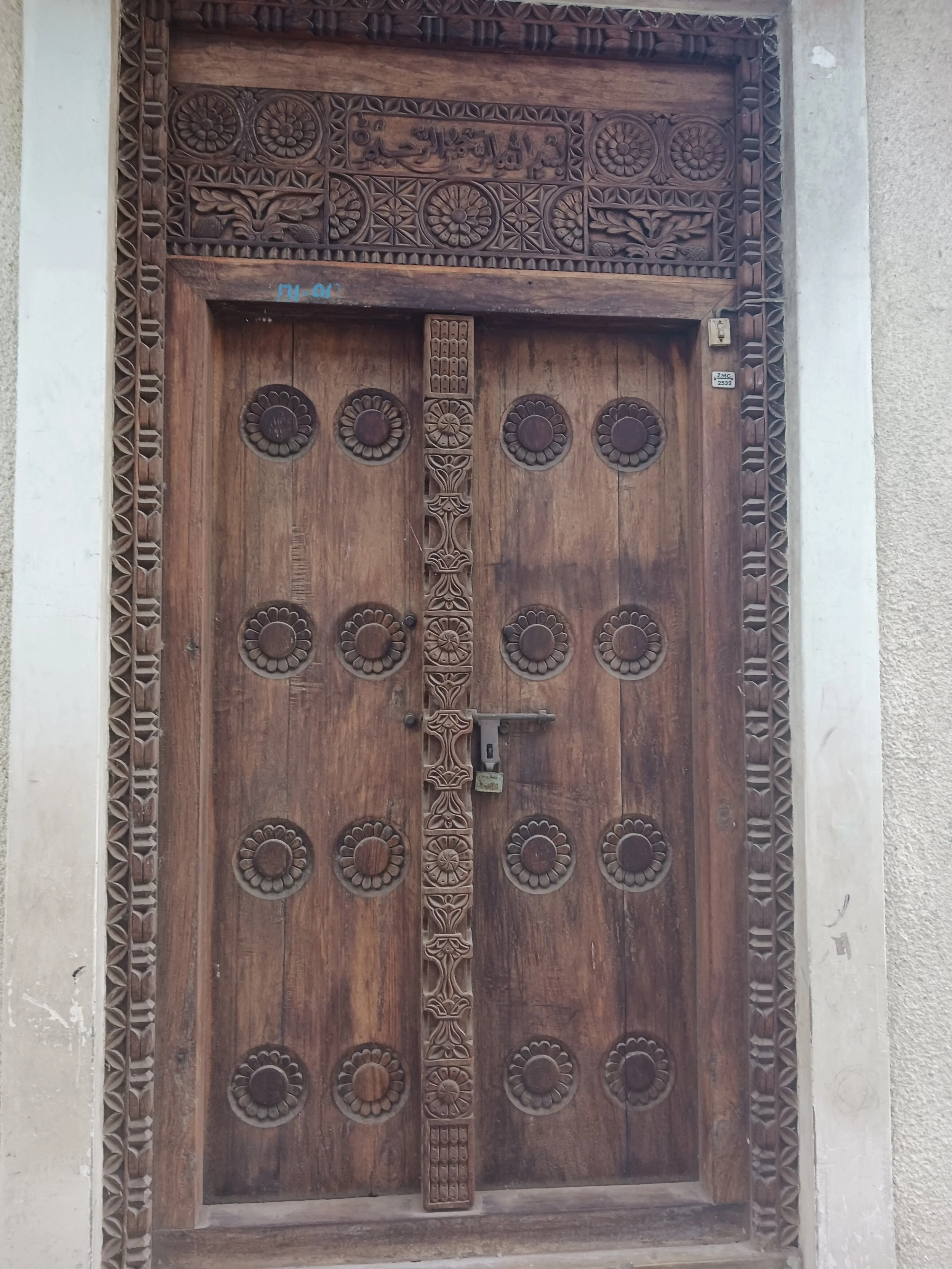In Zanzibar’s Old Town (Stone Town), a front door is not just, well, a door. It’s a thing of beauty and style, a symbol of the wealth and social status of the family or the aspirational number of stars of a hotel. In Stone Town’s winding alleys, where few windows face outwards and stucco, baked by the heat and soaked by the monsoon storms, peels away from the stone walls, the elaborate carved doors are the most impressive architectural feature.
Stone Town’s architecture is a mix of Arabian, Indian, European, and African influences. Arab buildings are often two or three stories high and square, with rooms with verandas facing an inner courtyard. Indian buildings often have a shop on the ground floor, and living quarters with elaborate verandas above.
Outside many is a stone bench, called a baraza, where women and men gather separately. Traditionally, this is where you meet guests and visitors and serve coffee before formally inviting them into the house. Today, the baraza is mostly just a place to hang out or to set up a small display of whatever you want to sell to passing mzungu (foreign) tourists.
Arabian-style doors typically have a square frame with a geometrical shape and sometimes an inscription from the Quran.
Doors built towards the end of the 19th century often incorporate Indian influences, with semicircular tops and intricate floral decorations.
Because people still want to impress their friends, neighbors and passersby, the door-building industry is thriving. There’s also demand from the expanding tourist industry, with many hotels, restaurants, and stores sporting heavy stylish doors.
My hotel, the 12-room Asmini Palace is a newer building but, like traditional Arab houses, is built around a small courtyard. You enter through a heavy double door, with polished brass spikes, a copy of an older design. “That’s a tradition from India,” the desk clerk explained. “Stops the elephants from battering down the doors.”






